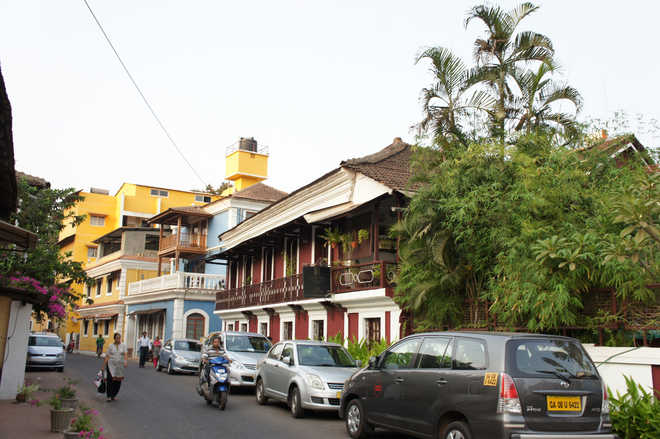
Aradhika Sharma
When on a holiday to Goa, a person usually imagines a ‘chill out’ time —frolicking in the golden (albeit overcrowded) beaches, cheap beer, fresh and delicious seafood, exciting night markets and thrilling watersports. Some will come for the casinos.
However, Goa has many more facets. The beautiful state has a significant history stretching back to the second century, the most recent being the Portuguese rule. Some concerned denizens of the state are trying to maintain this in the face of rapid expansion in terms of their heritage, buildings and lifestyle. As is typical of the conundrum of commercialisation, while development has brought them prosperity, it is also responsible for diminishing the calm, smooth pace of life that was taken for granted up to a few years ago.
A walking tour
However, all is not lost! If you want to get a taste of the Goa of yore, you could sign up for a heritage walk, conducted by the Goa Heritage Action Group (GHAG), which is working towards conserving the legacy of Goa.
One of these is the Fontainhas walk in Panjim. The three-hour walk takes you through the areas of Sao Tome, Fontainhas, and the wards of Mala and Portais, which were developed later. Incidentally, Fontainhas gets its name from the Phoenix fountain, which originally supplied water to the area. São Tomé is named after a tiny church built in 1849, which was once the centre of a busy square. Our diverse group collected in front of the old post office (used by the Portuguese as tobacco store) and was greeted by the smiling Ann Barretto, our guide for the walk. (The walk is usually led by a resident of the city committed towards reviving and maintaining the rich Goan heritage). Then started a walk that is probably one of the most surprising and charming walks through living history.
The Portuguese influence
Briefly, Vasco de Gama discovered Goa during the rule of Ismail Adil Shah and his Ottoman allies. The Portuguese fleet attacked and conquered Goa in 1510, after which they ruled Goa for about 450 years, surrendering it to independent India in December 1961. Panjim became the capital of Goa in 1843 and the homes and buildings here date back to about 150 years.
Amazingly, this charming hamlet of residences lies just beyond the madding, crowded highway and is as quiet and peaceful as it must have been a hundred years ago. The quaint Indo-Portuguese architecture includes lovely churches, huge bungalows with sprawling gardens and deep verandahs, narrow by-lanes and at places, cobbled streets. Our smiling guide told us the story of legendary Rooster of Barcelos. The colourful rooster finds space atop buildings and structures and is said to bring good luck and happiness.
These are streets of magic! The streets are narrow and winding, sometimes sloping. You’ll stop at the oldest bakery in Goa, the ‘31st January Bakery’ whence you can buy the famous bebinca. You’ll pass some beautiful churches, quaint cafes serving local food, the lovely Gitanjali art gallery, homes that have been restored and are now guest houses (la Maison, Alfanso Guest house) with the most exquisite period furniture, and yes, a breadfruit tree or two, laden with its exotic fruit. Along the way, you’ll come across a couple of local lads selling the Goan Poee bread stored in wicker baskets balanced atop the carriers of their bicycles. You can buy some bread and munch it as you walk.
The most spectacular are the colours of the buildings — bright blue, ochre yellow, orange, white, maroon, with huge windows bordered in contrasting colours. The roofs are tiled and sloping. The buildings are painted annually in accordance to the rule laid down by the Portuguese. The name plates are in blue and white tiles with a decorative trellis or two. The entire area is bursting with a profusion of Bougainvilla, palm, trees, creepers and vines. Just before you come to the St Sebastian church, you will be shown the wishing well, that may be straight out of a picture book. Make a wish if you like and take a picture for sure.
The experience is surreal. In its old world beauty and charm, it’s as if you were in a different time zone. You end the walk at People’s High School but to complete the experience, you are taken to listen to some songs in a beautiful home. You are ushered in by the host into a parlour filled with beautiful Goan-Portuguese memorabilia. After being graciously welcomed and seated, you are treated to several songs by the host as he plays the guitar. He sings for you Portuguese songs, Goan songs, songs of celebration, love and longing.
In the end, it is impressions of music, colour and celebration that you take back with you. Certainly, one walk is not enough to take it all in — you vow to come back at least once more!



























